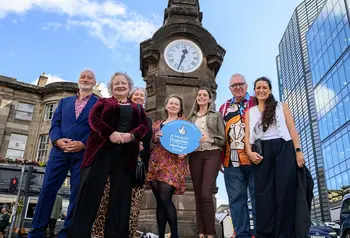Grantee Q&A: building a platform for a community's heritage

About the project
Migrant Voice created Putting Ourselves in the Picture, a programme of exhibitions and events that supported migrants and refugees in Scotland to use photography, curation, oral histories and public speaking to tell their stories. The project’s primary exhibition was at Glasgow’s Kelvingrove Art Gallery and Museum in 2023, but participants’ work has now been displayed at several festivals and community spaces.

What did you find most challenging about your application and how did you overcome these challenges?
"The application process is lengthy and time-consuming. It takes a lot of staff time and there is a risk, in terms of the cost of that time if the application is not successful. To try and minimise that risk, we drew on our experience with other funding applications and of editing our own publications, such as the Migrant Voice newspaper, to get our key messages across effectively and concisely."
What would you recommend future applicants spend more time on when developing their application?
"The application process was a team effort, from surveys and research to multiple team meetings that refined and developed our ideas into a workable proposal. This early collaborative work was key. I’d recommend gathering as much expertise and knowledge as you can early on and spending as much time as possible on developing your relationships with partner organisations."

What one piece of advice would you give to someone applying for funding for the first time?
"Make sure you have ample time with the communities you work with to explore the need and develop your project idea. This will help you develop a meaningful project that has clear outcomes and measurable indicators to show the impact of your work."
When delivering your project, what surprised you?
"The reach and scale of the project – it expanded way beyond its original scope because it was led by our community. In response to their wishes and recommendations, instead of one new exhibition, we ended up doing four, each in a different format. This required much more capacity, and we had to be resourceful to keep on top of the different strands of the project. Continuous volunteer and participant engagement played a key role in making each exhibition happen."
What one thing do you know now that you wish you’d known before you began?
"That festivals and community and street spaces would be interested in showcasing migrants’ heritage. Once we had something to present – zine stories, images, or events – we started receiving invitations to be part of festivals and to hold exhibitions in various public spaces. This enabled us to bring the exhibitions into more environments where people who didn’t already have an interest in these issues could access them."
What’s been the most rewarding thing to come out of your project?
"We’ve managed to engage a vast variety of people: different ethnicities, different understanding of artistic practices, different interests, different levels of English, of life experience, of migration status. It’s an incredible community.

"We’re very proud that some of our participants have been able to develop their skills and presence in the arts sector thanks to the platform we provided for them. Seeing our community genuinely happy – how the project fostered wellbeing and mutual understanding – is a wonderful legacy, alongside the creative pieces produced."
Following this funding/project, what are you most looking forward to in your organisation’s future?
"We want to continue embedding a creative aspect in all our work and engaging communities in interactive ways – using exhibitions, photography, writing, audio-visual content and other materials to engage the public in our cause and to document the migrant experience in Scotland for future generations."
This is part of a new series of Q&As with successful grantees – helping to demystify the project application and delivery process and share experience across the sector. Explore our most recent project updates and case studies.


